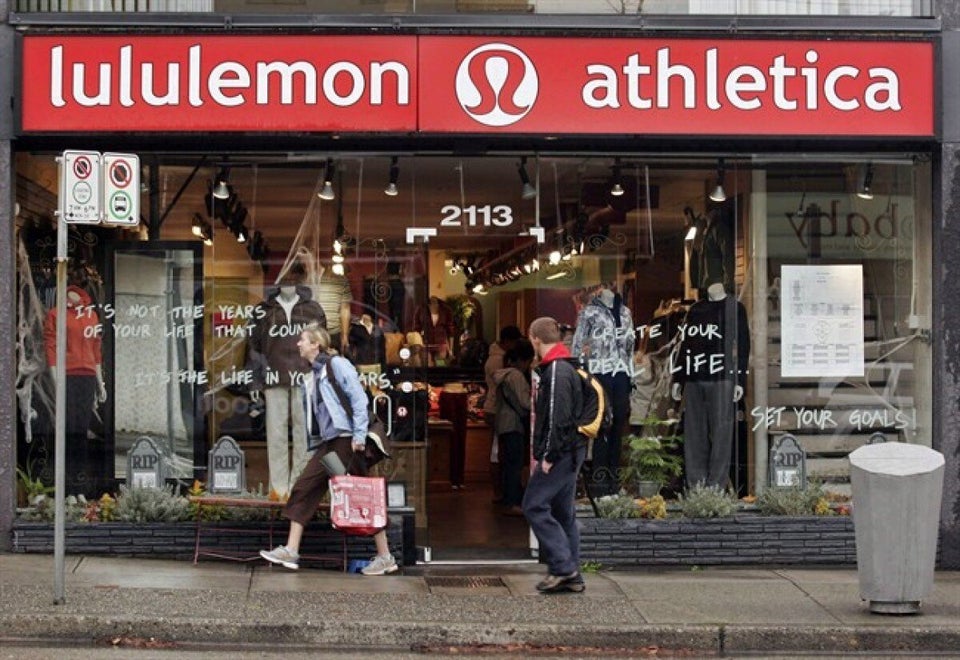
The news this week that Loblaws’ in-house clothing brand, Joe Fresh, has found a home in JCPenney locations in the U.S. has focused attention on the presence of Canadian businesses and brands in the U.S.
And while Canadians will no doubt take a little bit of national pride in the expansion of one of the country’s most visible clothing brands into the massive U.S. market, these sorts of moves are nothing new. From TD Bank to Tim Hortons, U.S. consumers are being increasingly exposed to brands that were once only household names in Canada.
So why is this happening now? One frequently-cited explanation is the loonie’s rise in value to parity or near-parity with the U.S. greenback in recent years. Thanks to the powerful Canadian dollar, it’s relatively cheap for Canadian companies to invest in U.S. markets.
That logic works in the other direction, too: A whole slew of U.S. brands are currently working to enter the Canadian market -- including retail giant Target -- in part because the higher Canadian dollar means U.S. companies can make more money (in U.S. dollars) from Canadian sales. And the perception that Canada weathered the financial crisis better than most countries also helps to encourage businesses to set up shop here.
Check out our slideshow of Canadian names making waves in U.S. business.
(Text version below slideshow)
Lululemon
Dennis "Chip" Wilson opened the first Lululemon location in Vancouver's trendy Kitsilano neighbourhood in 1998. Since then, the yoga fashion retailer has expanded to 141 locations across the U.S. and Canada, arguably changing women's fashion in the process.
Tim Hortons
Canada's almost ridiculously popular coffee-and-doughnuts chain announced plans for 300 U.S. locations in 2010, despite the recession raging stateside. And though the company says it still has room for 700 more locations just in Canada, Goldman Sachs recently downgraded it to "sell" because of saturation in the coffee shop market.
IMAX
Since it was developed in the late 1960s, IMAX has been slowly introducing its super-huge cinema screens to audiences around the world. The brand's prominence took a big leap in 2002, when Hollywood studios began offering IMAX versions of some of their hit movies. IMAX screens now appear in 583 theatres in 48 countries.
BMO
The Bank of Montreal made its move into the U.S. in 1984, when it bought Chicago's Harris Bank. In 2011, BMO Harris bought Wisconsin's M&I Bank, giving it a foothold in Arizona, Kansas, Minnesota, Missouri and Wisconsin.
TD Bank
Canada's second-largest bank has built North America's sixth-largest bank branch network through a series of acquisitions in the U.S. In 2005, it bought Portland, Maine-based Banknorth, giving TD a foothold in the northeast U.S. Its purchase in 2008 of New Jersey-based Commerce Bancorp expanded TD's presence into the mid-Atlantic and Florida.
Thomson Reuters
Business media giant Thomson Reuters is headquartered in New York City, but is controlled by a holding company majority-owned by the wealthy Thomson family of Toronto, which once owned the Globe and Mail. The Thomsons bought 53 per cent of U.K.-based news service Reuters in 2008, creating the entity now known as Thomson Reuters.
McCain Foods
The four McCain brothers founded McCain Foods in New Brunswick in 1957, and since then the company has grown to become the largest frozen french fry purveyor in the world, with more than 20,000 employees at 57 plants in dozens of countries. It holds some 33 per cent of the world's frozen fry market, though its market share in the U.S. is somewhat less than that.
CN Rail
The government of Canada created CN Rail in 1919 as a way of rescuing a bunch of bankrupt private railway companies. After the company was privatized in the mid-1990s, CN went on a buying spree in the U.S., picking up the Illinois Central Railroad in 1998, Wisconsin Central in 2001, and the EJ&E railroad in 2008, among others. It now calls itself "North America's Railroad" -- a far cry from when it was Canada's national rail carrier.
Circle K (Couche-Tard)
Quebec-based convenience store chain Couche-Tard bought the Circle K convenience store from ConocoPhillips in 2003, giving the company a highly recognizable brand in the U.S. Couche-Tard this year bought Norwegian firm Statoil's network of convenience stores along European highways, giving the company a major foothold in that market as well.
Canada Pension Plan
Okay, so the CPP isn't exactly a recognizable brand in the U.S., but the investment fund that manages its cash holds $150 billion in Canadians' retirement savings, and has been busily investing that cash into U.S. and other assets. The CPPIB is building 10 malls in California as part of a $1.8 billion joint venture, and recently spent $6.6 billion buying cable TV company Suddenlink, which operates in Texas, West Virginia, North Carolina, Oklahoma, Arkansas and Louisiana. The CPPIB bought a stake in Skype for $1.9 billion in 2009, and sold it for $8.5 billion in 2011.
